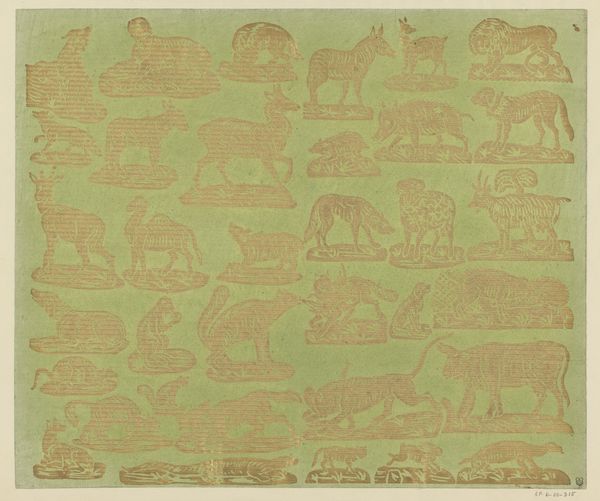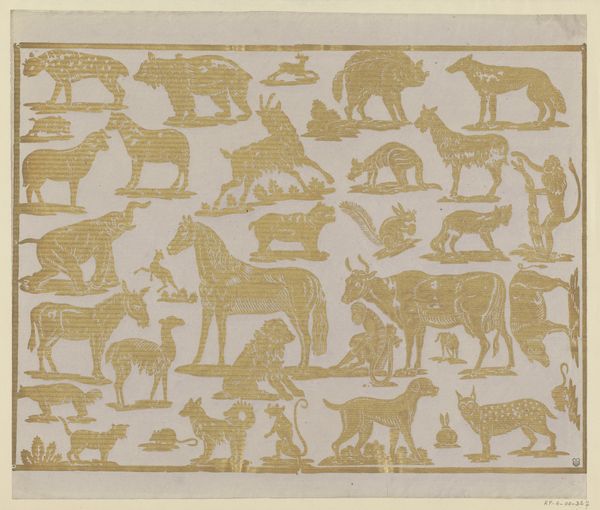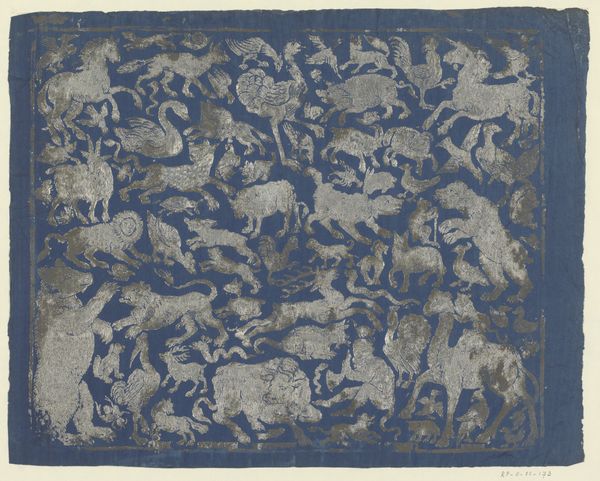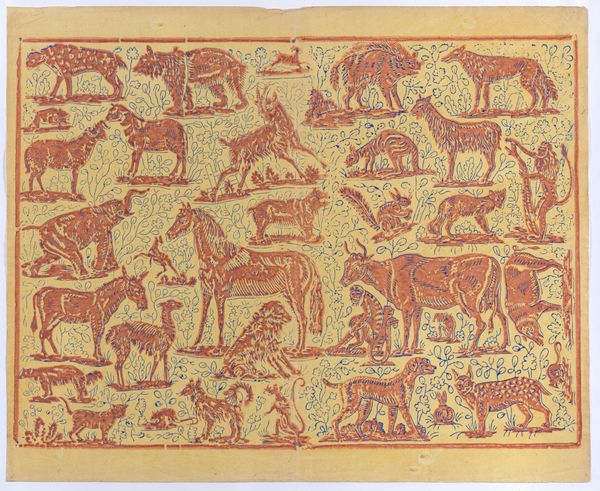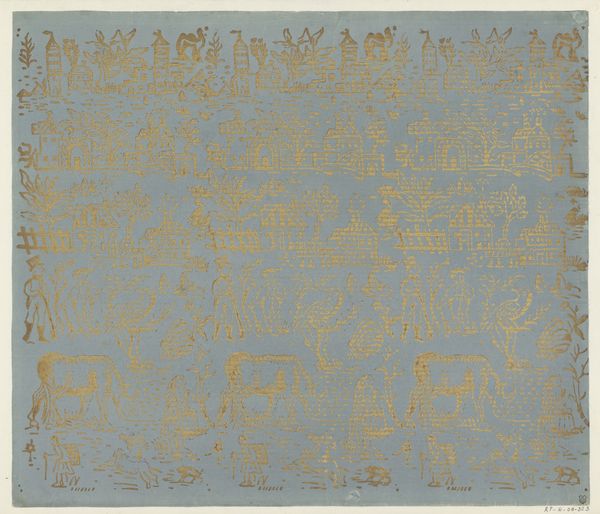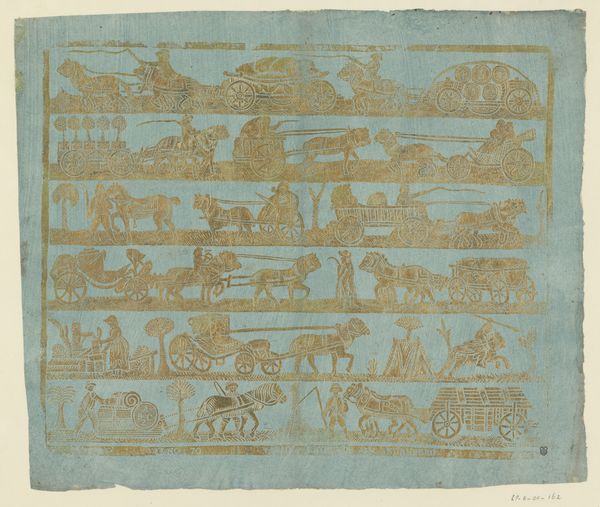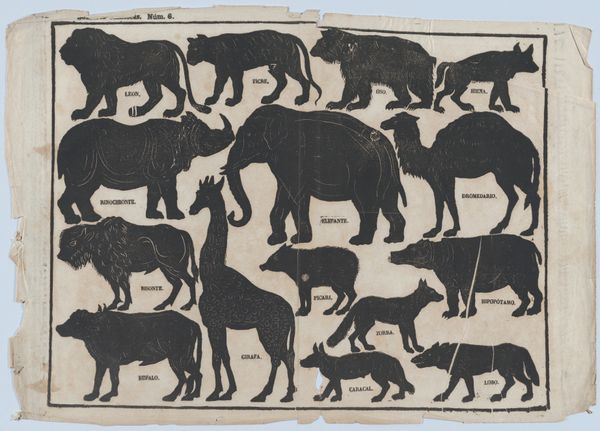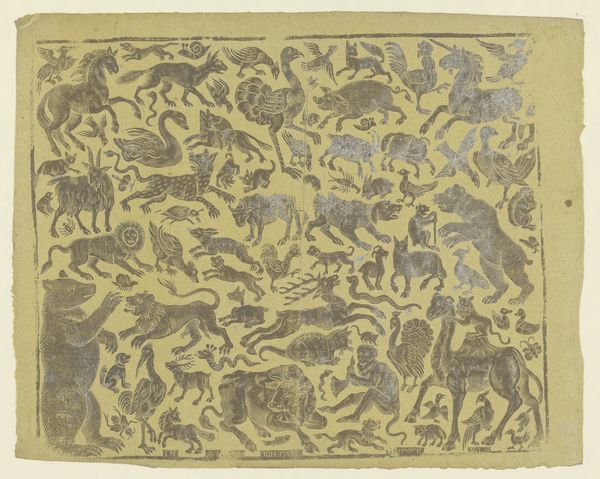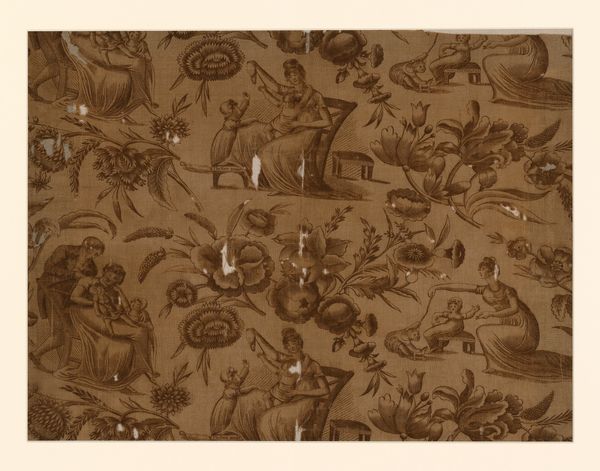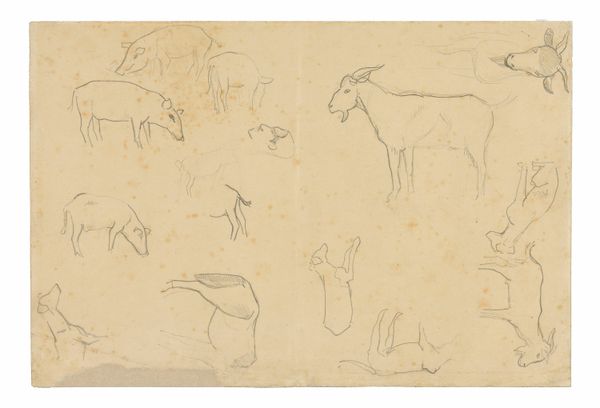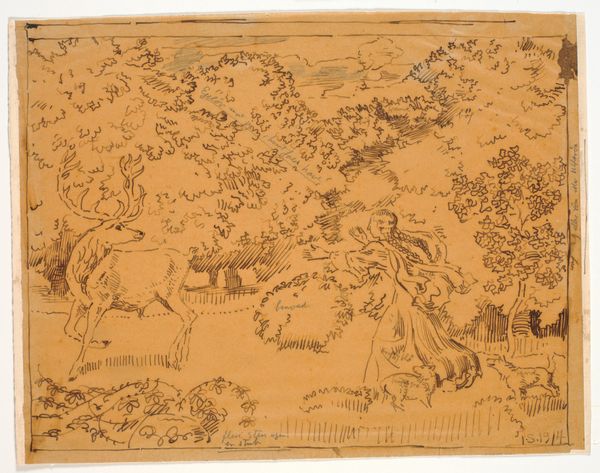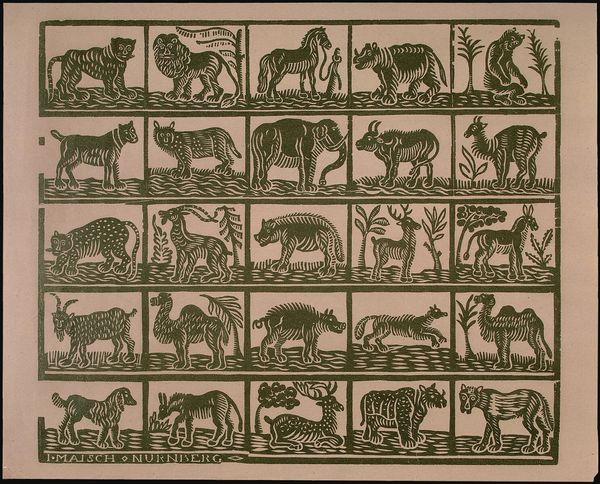
tempera, print, textile
#
animal
#
tempera
# print
#
textile
#
folk-art
#
organic pattern
#
geometric
#
textile design
#
decorative-art
#
imprinted textile
Dimensions: height 366 mm, width 433 mm
Copyright: Rijks Museum: Open Domain
Editor: Here we have "Blad met dieren," or "Sheet with Animals," made sometime between 1850 and 1920, possibly in Germany, using print and tempera on what seems to be textile. It’s an intriguing design, almost like a wallpaper sample, yet each animal seems carefully rendered despite the overall flatness. What catches your eye in this piece? Curator: My interest lies in the methods of production here. We have what appears to be mass-produced imagery – note the identical stylistic approach applied uniformly to all the creatures and a repetitive deployment. Given that this is likely intended as a design element, possibly for textiles as you say, it raises questions about labor practices of the time. Who designed this? Who printed it, and under what conditions? Editor: That’s a great point. It does have that factory-made aesthetic. So, is it then folk art or *faux*-folk art? Curator: Exactly! What’s the social function of such imagery? Were these patterns intended to bring nature indoors for an increasingly urban population? Or to connect with craft traditions and idealized notions of rural life? These animal designs also speak to consumption: what kinds of fabrics, for what purposes, were made with these prints? How does this change the role of decorative art when removed from a domestic item like clothing, and hung on a gallery wall? Editor: So you are thinking about how consumerism and the means of production shaped art, as opposed to traditional notions of art or the artist's genius? Curator: Precisely! It makes us think about art not just as an aesthetic object, but as the end-product of complex social, economic, and material relationships. Also note how craft traditions here were adapted to a very different industrial output. Editor: That’s definitely shifted my perspective. I was focused on the imagery, but considering the social context and production gives it so much more depth. Thanks! Curator: And for me, it's always a fascinating challenge to decode these complex relationships between materiality, artistry and the societal changes around the creation.
Comments
No comments
Be the first to comment and join the conversation on the ultimate creative platform.
